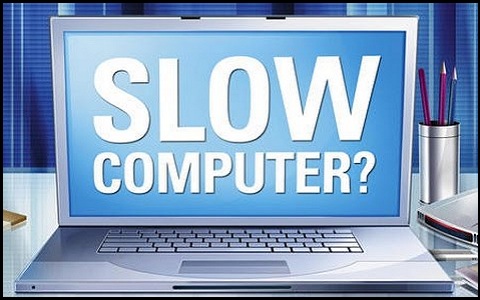Clearly, the most ideal approach to speed up an old, slow laptop is to update the hardware. This isn’t generally possible in laptops or certain desktops, yet you ought to upgrade the RAM and hard drive. RAM can give you a little bit of boost in specific areas; however upgrading your hard drive to a solid state drive (SSD) is the best recovery you can make to a slow old laptop. It’ll boot up speedier, applications will launch quicker, and it’ll nearly feel like a new laptop or computer altogether.
A flash RAM-based SSD gives your PC stunning speed, yet it’s costly by the gigabyte. A conventional spinning-platter hard drive gives you tremendous amount of storage capacity for very little money. However, in the event that you utilize both drives ie hybrid solution, and set them up properly, you can enjoy a hard drive’s mass storage with a great SSD performance.
How we make slow laptop fast?
Changing the O/S drive to a SSD is likely the most valuable upgrade you can do. Everything is speedier, so you feel the advantage whether you are browsing, gaming, Working and so on for most PC clients, we recommend utilizing SSD as the essential drive for your windows, linux, Mac etc and most important software. We at that point prescribe using at least one HDD inside a same PC, or an external HDD, to store documents, pictures and music, which needn’t bother with the quick access times of SSD.
Laptop computers are often delivering with a DVD drive. Be that as it may, is this DVD drive truly required now a day? An ever increasing number of individuals are selecting to abandon the inner optical drive, and introduce a second hard drive (SSD). What we do is simply remove your optical drive, add your new SSD hard drive, and load up a fresh out of the box new SSD with Windows and your applications.
To replace the DVD drive, you’ll require a caddy to opening into the space involved by the drive. In this caddy, you’ll space a substitution SSD. DVD drives specifically are generally a specific shape and size. This implies a caddy can be effectively slipped into the space that the DVD drive involved.
Why SSD on slow laptops?
An SSD has access speeds of 35 to 100 micro-seconds, which is nearly 100 times faster. This faster access speed means programs can run more quickly, which is very significant, especially for programs that access large amounts of data often like your operating system.The SSD drive has no moving parts. It uses flash memory to store data, which provides better performance and reliability over an HDD. The SSD uses less power than a standard HDD, which means a lower energy bill over time and for laptops and increase of battery life. With no moving parts, SSD generates little to no noise. Because there are no moving parts and due to the nature of flash memory, the SSD generates less heat, helping to increase its lifespan and reliability. SSD is not affected by magnetism. SSD is available in 2.5″, 1.8″, and 1.0″, increasing the available space available in a computer, especially a desktop or server.
Conclusion:
Solid state drives are most appropriate to PC and laptop users who look for high performance for their slow laptop and computers. If you don’t mind managing multiple volumes and you have the budget, pairing a fast SSD with a high-capacity hard drive will result in the best of both worlds. The SSD can hold the OS and your most frequently used applications, while the hard drive can handle the bulk-storage duties. Managing multiple storage volumes can be a bit of a pain for casual PC users; if you know your way around a PC, however, combining a fast SSD and large hard-drive storage is a great, high-performance approach with minimal compromise.




13 thoughts on “Looking to Live Again a Slow Laptop and Desktop”
Comments are closed.